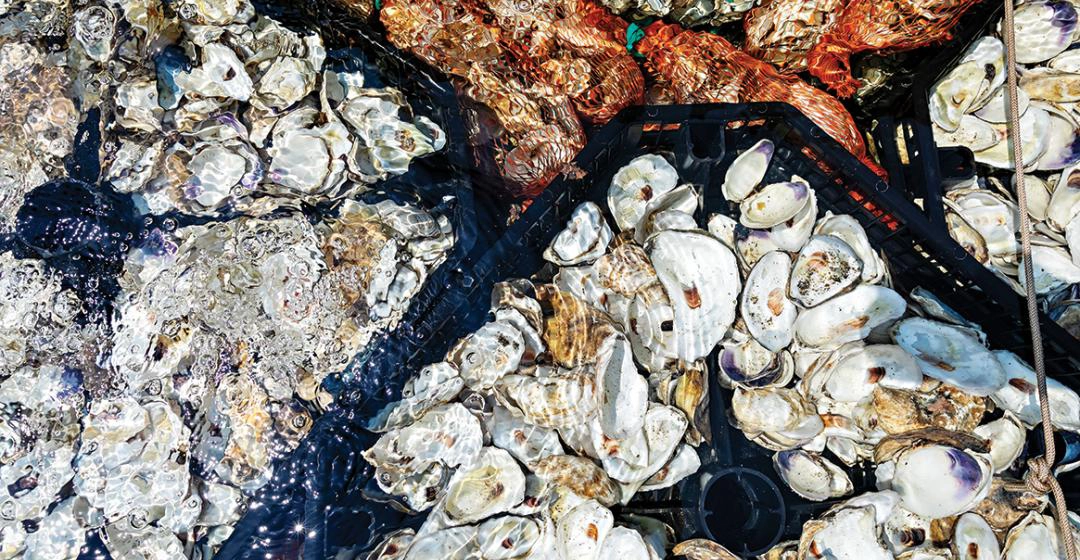Just a few short years ago it seemed that the wild oysters of Martha’s Vineyard had survived the apocalypse and were on their way to recovery. The trouble started sometime in the 1990s, unnoticed at first, when the pathogen that causes oyster dermo disease made its way to the Island’s great ponds. Harmless to humans but often deadly to oysters, it did not go unnoticed for long. Rick Karney, then the director of the Martha’s Vineyard Shellfish Group, had been on the lookout for signs of dermo, which had been spreading slowly up the East Coast from the Gulf of Mexico, where unusual oyster die-offs were first recorded in the 1940s. The culprit behind the deaths wasn’t properly taxonomized until the ’70s, by which time it was spreading northward along the Atlantic Coast.
As the pestilence swept up the coast in the late ’80s and early ’90s, Vineyard ponds seemed to stay clear. Karney wanted to keep it that way by making sure the oysters they were seeding were healthy. “Every year, we had to certify the animals we were working with were disease-free, so we’d send off our local brood stock to Dr. Roxanna Smolowitz,” he said. Smolowitz is a now-retired veterinary professor specializing in aquatic pathology, who connected with the Vineyard while serving as a researcher at Woods Hole Oceanographic Institution. “I did this every year, and it would come back clean, and everything would be fine,” said Karney.
In 1997, however, something changed. “She got back to me and was kinda a bit in shock. And she said, ‘Well, you know, you’ve got a lot of dermo in these animals.’” Karney now wonders if some earlier mysterious die-offs in the ’90s might have been dermo as well. In a Vineyard Gazette editorial from 1993 entitled “Disaster in the Great Pond,” the writer puzzled over the deaths: “Were the oysters starving? Are they being poisoned? Did they die from a lack of oxygen at the bottom? At this point it’s anyone’s guess.”
Full article at Martha’s Vineyard Magazine
Photo credit: Randi Baird

